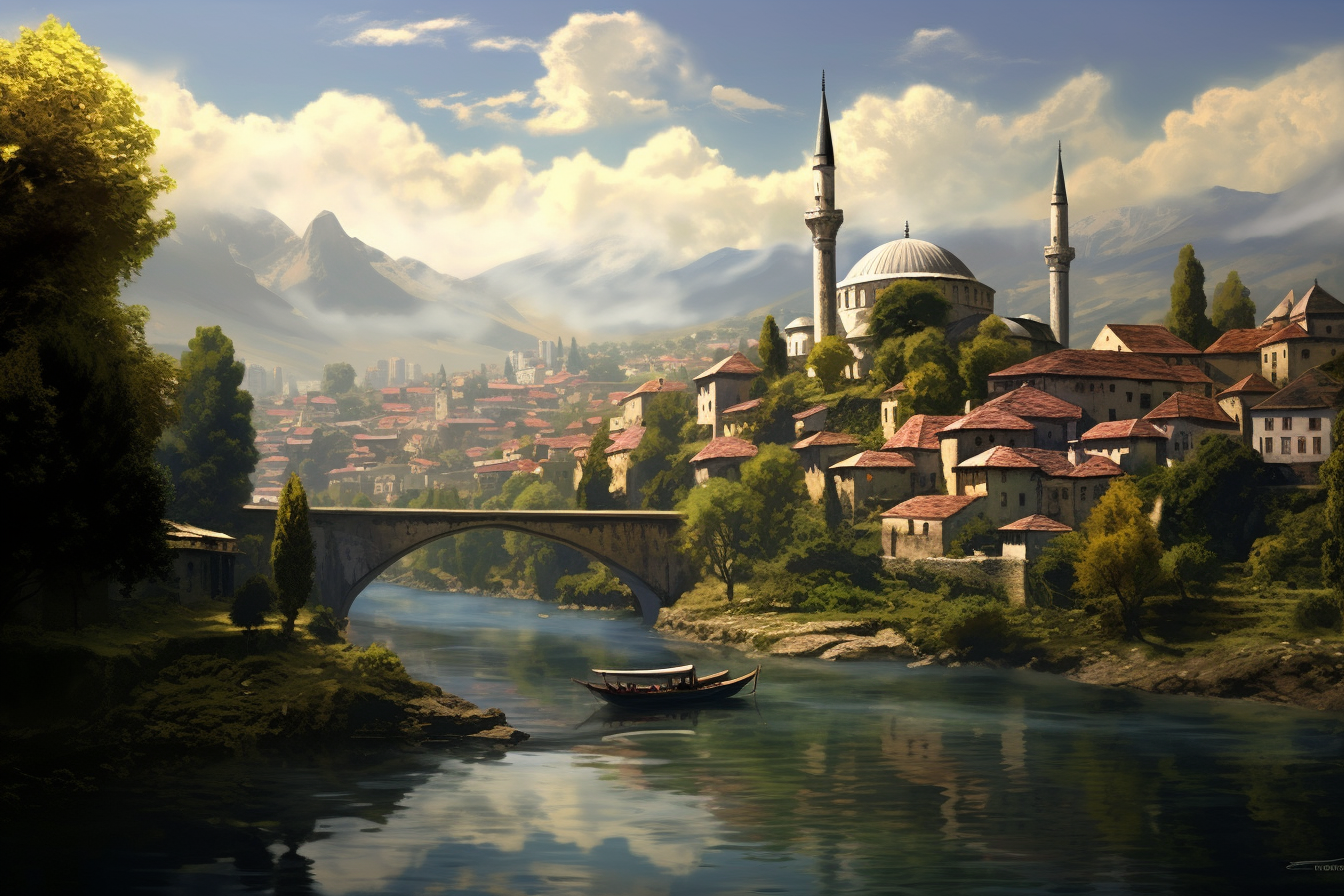A Timeline of Bosnia and Herzegovina

Illyrian Settlements (circa 2000 BC - 500 BC)
The early inhabitants of the region were the Illyrians, a group of Indo-European tribes. These tribes lived in fortified hilltop settlements and had their own distinct culture, language, and traditions. They were known for their warrior culture and intricate metalwork.
Illyrian Kingdoms (500 BC - 168 BC)
As the Illyrian tribes consolidated, several prominent kingdoms emerged. The most notable was the Kingdom of the Dalmatae, which controlled a significant portion of present-day Bosnia and Herzegovina. These kingdoms often clashed with neighbouring entities, especially the expanding Roman Republic.
Roman Conquests (168 BC - 1st century AD)
Starting with the Illyrian Wars, the Romans began their campaigns to subdue the Illyrian tribes. By the end of these conflicts, much of the Illyrian territories came under Roman control. The region became a vital frontier zone, guarding against potential invasions from the north.
Incorporation into Dalmatia (1st century AD - 395 AD)
With the region firmly under Roman control, it was incorporated into the Roman province of Dalmatia. This period saw the construction of roads, aqueducts, and cities, including the prominent city of Salona. Roman rule brought stability, urbanization, and introduced Latin language and culture to the populace.
Byzantine Influence (395 AD - 6th century)
Following the division of the Roman Empire, the region became part of the Eastern Roman Empire, known as the Byzantine Empire. Under Byzantine rule, the area experienced a mix of Roman governance and Greek culture, with Christianity continuing to spread.
Slavic Migrations (6th century - 7th century)
During the 6th century, Slavic tribes began their migrations into the Balkans. These tribes, primarily the South Slavs, settled in the region, gradually assimilating with the local Illyrian and Romanized populations. This migration laid the groundwork for the diverse ethnic landscape of modern Bosnia and Herzegovina.
Formation of Early Slavic States (7th century - 9th century)
As the Slavic tribes settled, they began to form early polities and principalities. The region saw the rise of entities like Zahumlje and Travunija. These states, while influenced by the Byzantines, started to develop their own distinct Slavic identity.
Christianization and Cultural Shifts (9th century - 11th century)
The process of Christianization, initiated under Roman and Byzantine rule, intensified during this period. The region became a battleground for religious influence between the Roman Catholic Church in the west and the Eastern Orthodox Church in the east. This religious division would later play a significant role in shaping the identities of the Bosniak, Serb, and Croat populations.
Emergence of the Banate of Bosnia (12th century - 1180 AD)
By the 12th century, a distinct political entity known as the Banate of Bosnia began to emerge. Under the leadership of local rulers called Bans, this medieval state would lay the foundation for the Kingdom of Bosnia in the subsequent centuries.
Medieval Bosnian State (1180 AD - 1463 AD)
The Banate of Bosnia emerged as an independent state, later becoming a kingdom under King Tvrtko I. The period saw the spread of the Bosnian Church, a native Christian sect.
Conquest and Subjugation (1463 AD - 16th century)
In 1463, the Ottomans overran Bosnia, ending its status as a medieval kingdom. The Bosnian populace faced significant changes as the Ottomans imposed their administrative and tax systems. The local nobility either fled, converted to Islam for political advantage, or faced persecution.
Devshirme: A Harsh Levy (16th century - 17th century)
One of the most grievous policies enforced by the Ottomans was the devshirme system. Christian families were subjected to the forcible removal of their sons, who were then converted to Islam and inducted into the Janissary corps or other state roles. This system not only served as a tool of oppression but also aimed to assimilate and Turkify the local population.
Economic Strains and Cultural Impositions (16th century - 18th century)
While cities like Sarajevo and Mostar did see architectural developments, the rural populace often bore the brunt of heavy taxation. Economic hardships were compounded by the empire's attempts to impose Ottoman culture and norms, often sidelining local traditions and practices.
Era of Revolts (18th century - 19th century)
As the Ottoman Empire's power waned, Bosnia became a hotbed of revolts and uprisings. The local population, irrespective of their religious affiliations, often resisted Ottoman decrees, especially those that infringed on their rights or economic well-being.
Tanzimat Reforms: Too Little, Too Late (19th century - 1878 AD)
In a belated attempt to modernize the empire and placate its subjects, the Ottomans introduced the Tanzimat reforms. However, these often met with skepticism in Bosnia, as many saw them as mere window dressing, failing to address the deep-rooted issues of the empire's rule.
Austro-Hungarian Rule (1878 AD - 1918 AD)
Following the Treaty of Berlin, Bosnia and Herzegovina came under Austro-Hungarian administration. The period saw modernization efforts, but also nationalistic tensions. The assassination of Archduke Franz Ferdinand in Sarajevo in 1914 was a key event leading to World War I.
Kingdom of Yugoslavia (1918 AD - 1941 AD)
After World War I, Bosnia and Herzegovina became part of the Kingdom of Serbs, Croats, and Slovenes, later renamed the Kingdom of Yugoslavia.
World War II and Socialist Yugoslavia (1941 AD - 1992 AD)
During World War II, the region was occupied by Axis powers and saw significant internal strife. After the war, it became a republic within Tito's Socialist Federal Republic of Yugoslavia. The era was marked by industrialization, modernization, and relative inter-ethnic harmony.
Bosnian War and Independence (1992 AD - 1995 AD)
Following the dissolution of Yugoslavia, Bosnia and Herzegovina declared independence. This led to a war involving Bosniak, Serb, and Croat factions. The Dayton Agreement in 1995 ended the conflict and established the country's current federal structure.
Post-War Period (1995 AD - Present)
The post-war era has been characterized by recovery, rebuilding, and efforts to join international institutions. While the country has made progress, challenges related to governance, ethnic divisions, and economic development persist.





